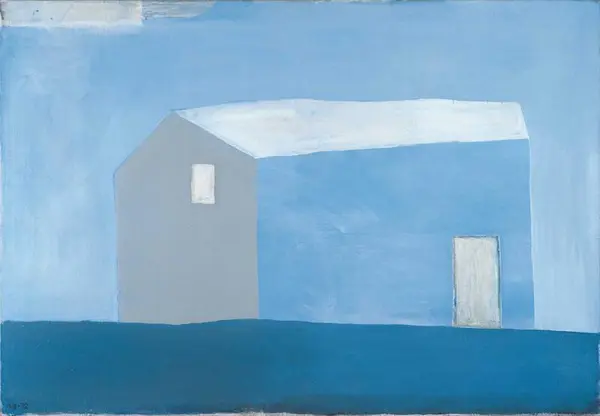- 1/1
Hanne Borchgrevink "Hus i vind" (1992)
“‘Wait a minute, before you go; there’s a question I wanted your opinion on: What’s the difference between concrete and abstract art?’ This, tentatively, is how Irma Salo Jæger rounded off our first meeting in the context of the exhibition Inconclusive Abstract Emotion.[…]
In his essay ‘After Modernism’ from 1968, the American composer Morton Feldman attempts, among other things, to describe ‘the abstract experience’. Central to this problem, then, is ‘the inconclusive abstract emotion’, implying for the composer the perhaps Kantian futility that is often attributed to all art within a modernist understanding. As is well known, the German philosopher Immanuel Kant believed that what distinguished aesthetic from other pleasures was that the aesthetic was ‘disinterested’. […]
Whether one approaches a painting by Mouche Thomsen or Irma Salo Jæger, or a sculpture by Aase Texmon Rygh, in the moment of experience it is of little significance whether one swears by one term to describe this art or by another. On the other hand, the words we use to describe our experiences naturally affect how the experiences develop.
So, the most important thing in encountering nonfigurative art is perhaps as simple as avoiding entering an exhibition space with the notion that ‘abstraction’ or ‘modernism’ are certain things.”
Excerpts from Erlend Hammer’s catalogue essay “Inconclusive abstract emotion”.
